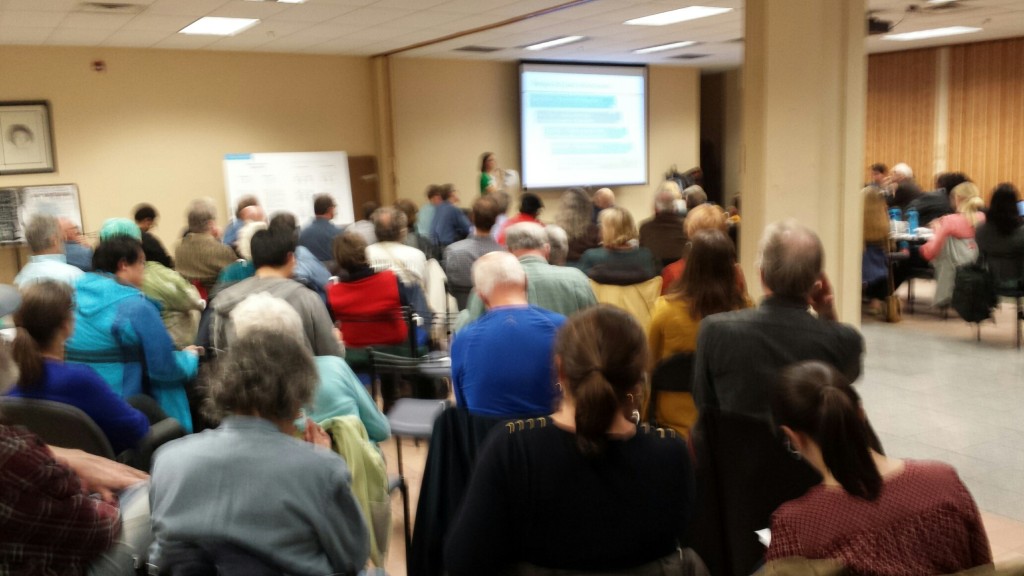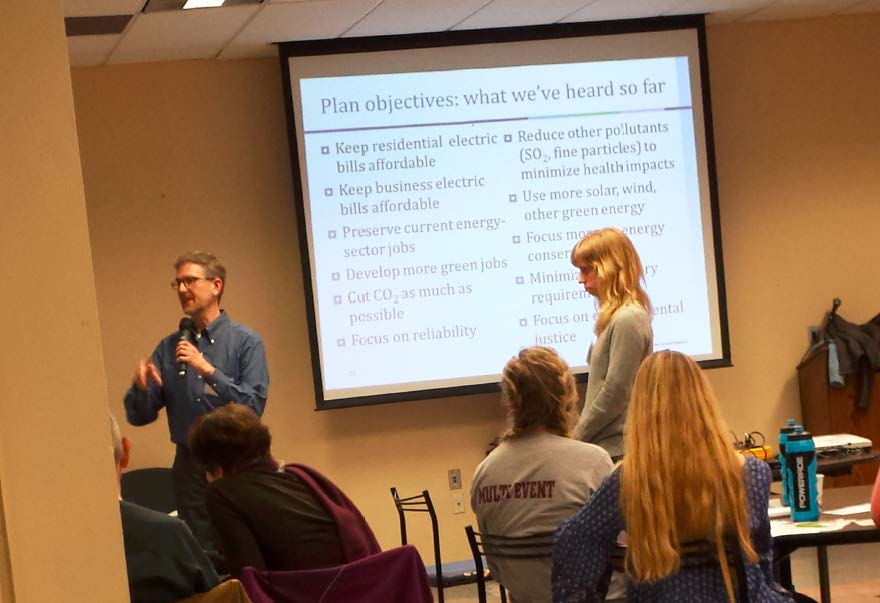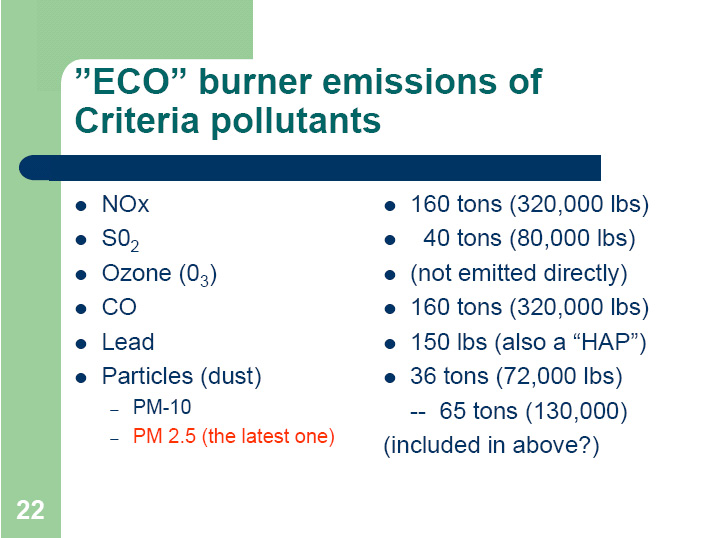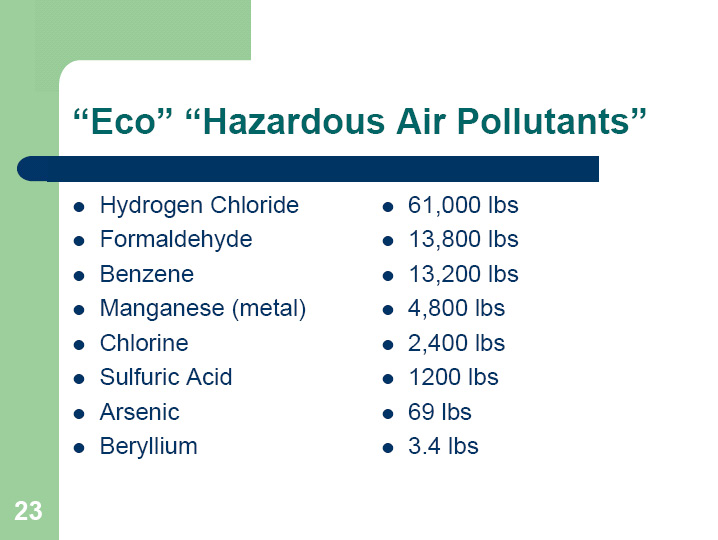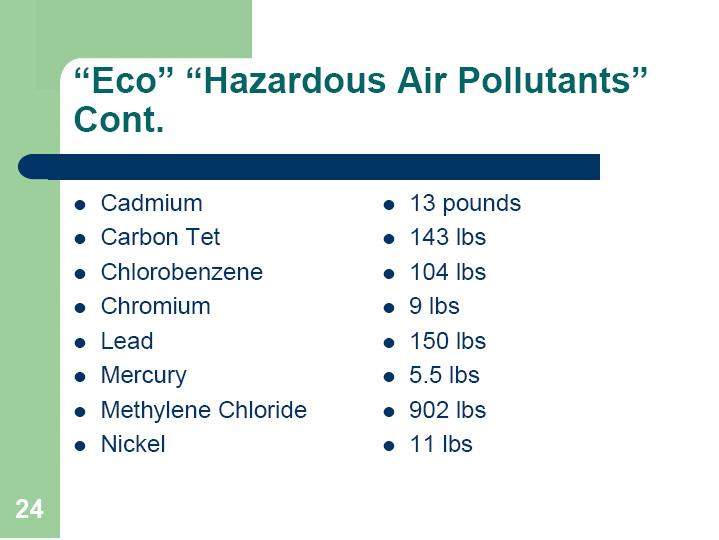And another MPCA listening session
March 10th, 2016
And last night in Rochester, more of the MPCA “Clean Power Plan” listening sessions. This one was less well attended that Monday’s in Minneapolis, but packed into a much smaller, almost claustrophobic sized room. Many concerns were raised, in large part because the “Clean Power Plan” remains a mystery — there is no MPCA plan for us to check out and comment on, and the federal Supreme Court put the EPA’s plan on hold.
The MPCA has been meeting with “stakeholders” which is primarily utilities, with a few energy wonks also attending — see this link, and scroll down for meetings and materials:
A turnout of this size, both last night and the night before, means that yes, people are interested and concerned, and I hope everyone stays in the loop and participates.
Clean Power Plan — MPCA Meetings
March 9th, 2016
Last night at the Urban League, the MPCA held a meeting, a “listening session” about the proposed Clean Power Plan as a prelude to its rulemaking.
TONIGHT IS ANOTHER MEETING:
MPCA Clean Power Plan Listening Session
Wednesday, March 9, 2016
5:30 p.m. – ? At least 8 p.m.
Cornerstone Plaza Hotel
401 6th Street S.W.
Rochester, MN
The MPCA has been holding ‘listening sessions,” a/k/a meetings, and has info on its site:
Clean Power Plan: Rulemaking in Minnesota
Here’s the federal plan, now on hold at order of the court:
Clean Power Plan (U.S. EPA)
I very much do like that they’re going forward, despite the federal stay, because it is going to take some time to ramp up efforts.
Here’s the handout I brought to that meeting. I ran out, only about 1/4 of the room covered, so that means there were at least 80 people there.
On the other hand, there are a lot of things I take issue with.
One thing that’s discouraging to me is that this is called the “Clean Power Plan” but they have not made any attempt to separate out and prohibit burning of garbage and biomass, both very dirty by any definition. Incineration must be removed from the definition of “renewable.”
Another issue is that they’re NOT going to put together a rulemaking Advisory Committee, as provided by statute. I asked about this last night and they verified it.
Instead, what they’re doing is gathering the same ol’ same ol’ folks in an informal process, and they’re not going over a proposed rule prior to its being sent to the MPCA head (remember, there is no Citizens Board thanks to certain MN legislators) for release, and when it’s released, it’s too late for substantive changes. The MPCA was part of the crew, with DNR and EQB, that so badly mangled that silica sand rulemaking (ummmm, whatever became of that, anyway?). This does not bode well.
So now, on to tonight’s meeting, gotta do some prep.
And yes, that’s Frank “Coal Ash” Kolasch presenting. What a moniker!
Tonight’s gathering starts at 5:30 p.m. or so with an open house (coffee & cookies), and the presentation and “listening” starts at 6:30 p.m.
MPCA Clean Power Plan Listening Session
Wednesday, March 9, 2016
5:30 p.m. – ? At least 8 p.m.
Cornerstone Plaza Hotel
401 6th Street S.W.
Rochester, MN
Be there or be square!
Smoke gets in your eyes…
August 26th, 2015
… and lungs and heart. This map from AirNow.gov via NPR shows the wide ranging impacts:
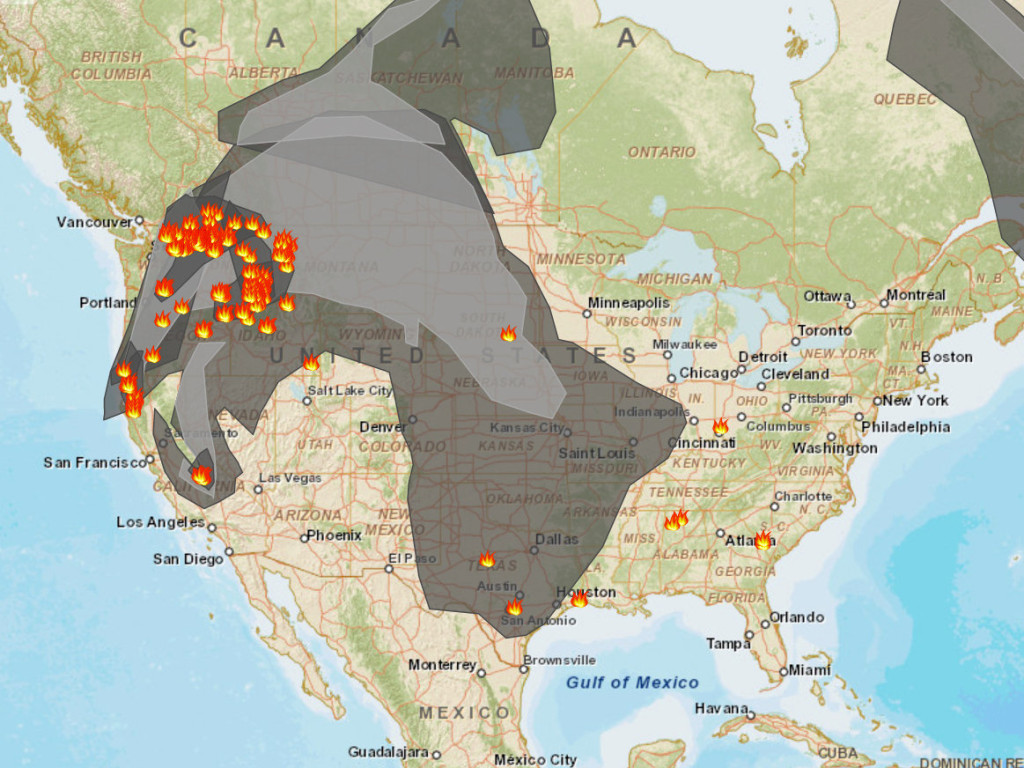 See Smoke From Wildfires Threatens Health in the West from NPR yesterday. Back when we had RED air quality warnings in Minnesota, a couple of months ago now, I was feeling it. But the last week or so, I’ve been waking up totally stuffed, headache, and it takes about an hour and a half to get my schnozz cleared out. We have no German Shepherds, and even though little one-coated Sadie does shed, and even though I nuzzled a cat day before yesterday, that’s not enough to cause this. Could it be seasonal allergies, which are admittedly worse with age (OH MY DOG, no German Sheperds is bad enough, but just breathing?)? I’m not convinced. This headache and being stuffed up isn’t my typical response, which tends to be runny eyes, sandpaper nose and sniffles. It’s got to be the fires.
See Smoke From Wildfires Threatens Health in the West from NPR yesterday. Back when we had RED air quality warnings in Minnesota, a couple of months ago now, I was feeling it. But the last week or so, I’ve been waking up totally stuffed, headache, and it takes about an hour and a half to get my schnozz cleared out. We have no German Shepherds, and even though little one-coated Sadie does shed, and even though I nuzzled a cat day before yesterday, that’s not enough to cause this. Could it be seasonal allergies, which are admittedly worse with age (OH MY DOG, no German Sheperds is bad enough, but just breathing?)? I’m not convinced. This headache and being stuffed up isn’t my typical response, which tends to be runny eyes, sandpaper nose and sniffles. It’s got to be the fires.
Meanwhile, I know a few folks who live out there, and in addition to having to evacuate and be on alert, others with relatives heading out to fight the fires, there are more subtle affects, where it’s showing up unbidden in photography jobs, an added interference with chemo for cancer, and a hazard for COPDers.
Here’s the chart of emissions for the Midtown Burner, from Saying NO to Midtown Burner Permits prepared by Alan Muller based on the Midtown Burner proposed air permit for the roughly 38MW biomass plant that was to burn “clean” trees in a much smaller amount than these wildfires across the west:

So if these are the numbers for the small biomass burner, what are the emissions for these wildfires? Is anyone doing testing in the plumes for what people are exposed to? There’s the emissions as above of things like formaldehyde that come from “clean” trees, the tremendous Particulate Matter, but what about all the other things too that are burned in these fires, like plastics, tires, creosote and penta poles? I’m not finding anything, and it seems this is something that should be done by the Washington, Oregon, California, Idaho, etc., state environmental agencies. There should be active warnings to people to wear masks outdoors, and indoors to filter the air. We have a HEPA filter for every room, but we’re not normal. The impacts of breathing this air will be felt immediately by some people, but there’s a high likelihood that impacts are cumulative and/or take time to develop. Protection now is crucial.
Muller: Time to think about…
August 23rd, 2015
Commentary by Alan Muller, Green Delaware, in today’s Delaware State News:
Commentary: Time to think about Delaware’s Peterson, Coastal Zone Act
So what about this Coastal Zone Act? What makes it special and worth preserving.
Alan Muller is Executive Director of Green Delaware.
Biden? A distraction, not a contender.
August 7th, 2015
Joe Biden and Champ
I wish Joe Biden would get over himself and stop musing about a Presidential run. He is not a contender. Biden’s intent? I’d guess it’s nothing more than a distraction from the strong showing by Bernie Sanders. Bernie is the nightmare of Democratic leadership, precisely because he’s the most compelling candidate for democratic voters (small “d”), people interested in preservation, revival, of our democracy.
Biden sure isn’t what I’d look for in a candidate. A recent post on Politico, How a Young Joe Biden Turned Liberals Against Integration, brings to light Biden’s efforts to preserve segregation. That should be enough to take him off anyone’s potential Presidential candidate list.
Alan Muller, Green Delaware, has had to deal with Biden for a long time now, and has a lot of insight into Biden’s character based on Biden’s record and actions. One story I’ve heard often is of a group opposing the Iraq war meeting with Biden in his office, and of Biden’s absolute and nasty dismissal of them and their concerns (expletives deleted for this PG-13 post).
Racial issues have been a struggle for Delaware, and Biden provides an example of white resistance to integration. Delaware was a slave state. Though it bills itself “The First State,” and though Delaware was the first state to ratify the Constitution, it was also the first state outside the Confederacy to reject the 14th Amendment, in 1867, and Delaware was very slow to ratify the 14th Amendment — it held off until 1901, 33 years after it was approved by enough states to be added to the Constitution.
Here’s an example of Biden’s “leadership,” a reminder of Biden’s efforts as a U.S. Senator to maintain segregation:
How a Young Joe Biden Turned Liberals Against Integration

